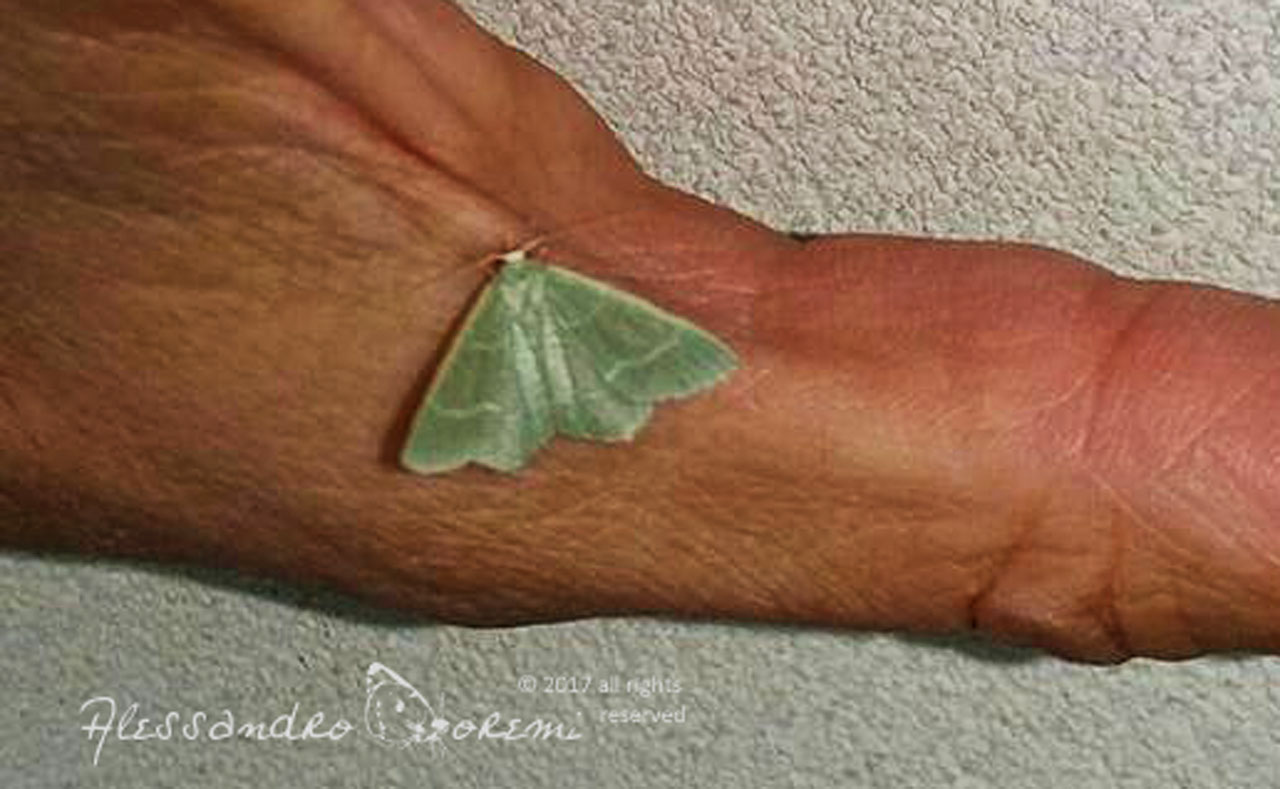Chlorissa cf. viridata
(Linneaus, 1758)
-
 Subfamily: Geometrinae, Hemitheini
Subfamily: Geometrinae, Hemitheini -
 Wingspan: 18-20 mm
Wingspan: 18-20 mm -
 Flight period: May - Jul
Flight period: May - Jul -
 Spread: Common
Spread: Common -
 Host plants: Polyphagous
Host plants: Polyphagous
Information
Chlorissa viridata also called Small Grass Emerald is a moth of the Geometridae family, subfamily Geometrinae, with a wingspan of 18-25 mm.
It is distributed throughout Europe with the exception of Ireland. *
In Italy it is also present in Sicily. *
The front and rear wings are emerald green with a tendency to fade to yellow quickly.
All four wings are crossed longitudinally by a cream-colored line, in the post-discal region.
Not always clearly visible another cream-colored line is visible on the fore wings in the disc region.
The head, the thorax and the abdomen are in the background color of the wings. **
The color of the wings tends to fade over time towards yellow or light brown.
Chlorissa viridata and Chlorissa cloraria are genetically closely related.
The external characteristics and also the genital differences are not always reliable consequently the photos taken during the flight of both species are the "cf."
and a must.
Univoltine moth, it frequents lowland habitats where host plants are present. Adults are visible from May to early July, rarely a second generation is
visible in August. The larvae can be found from July to August. *
They are bright green with cream-colored longitudinal lines, sometimes with pinkish shades.
The head is yellow / green with two pink shaded lines. The same shades are present at the apex of the legs.
It overwinters at the pupa stage. It frequents lowland habitats where host plants are present.
Eggs are smooth, greenish in color. **
The caterpillars are greenish in color, with a brown / purplish dorasal band. Other form sees a brownish caterpillar with a yellowish spot on each segment.
The pupa is light brown in color with a brown / black line crossing the abdominal segments, the wing area is dark brown. *
The Cremaster has a series (eight) of filiform hooked outgrowths. **
Habitats are varied from pine woods and forests, heaths and meadows.
The larvae feed on species of Calluna vulgaris (heather), Betula (birch) and Salix (willow including Salix repens).
Caterpillars have been recorded on other food plants such as Empetrum nigrum, Myrica gale, Vaccinium uliginosum (blueberry), Quercus (oak),
Potentilla (cinquefoil), Galium (gallium), Hieracium, Artemisia, Ononis (arrestabue), Clematis, Prunus (plum), Crataegus (hawthorn), Corylus, Rubus (bramble),
Erica, Ulex, Genista, Lotus corniculatus (gorse) and Ledum palustre (marsh rosemary).um.de/
* Lepidoptera mundi https://lepidoptera.eu/ - Fauna Europea https://fauna-eu.org/
** Bestimmungshilfe für die in Europa nachgewiesenen Schmetterlingsarten - http://lepiforum.de/



 EN
EN ITA
ITA
Social and publications